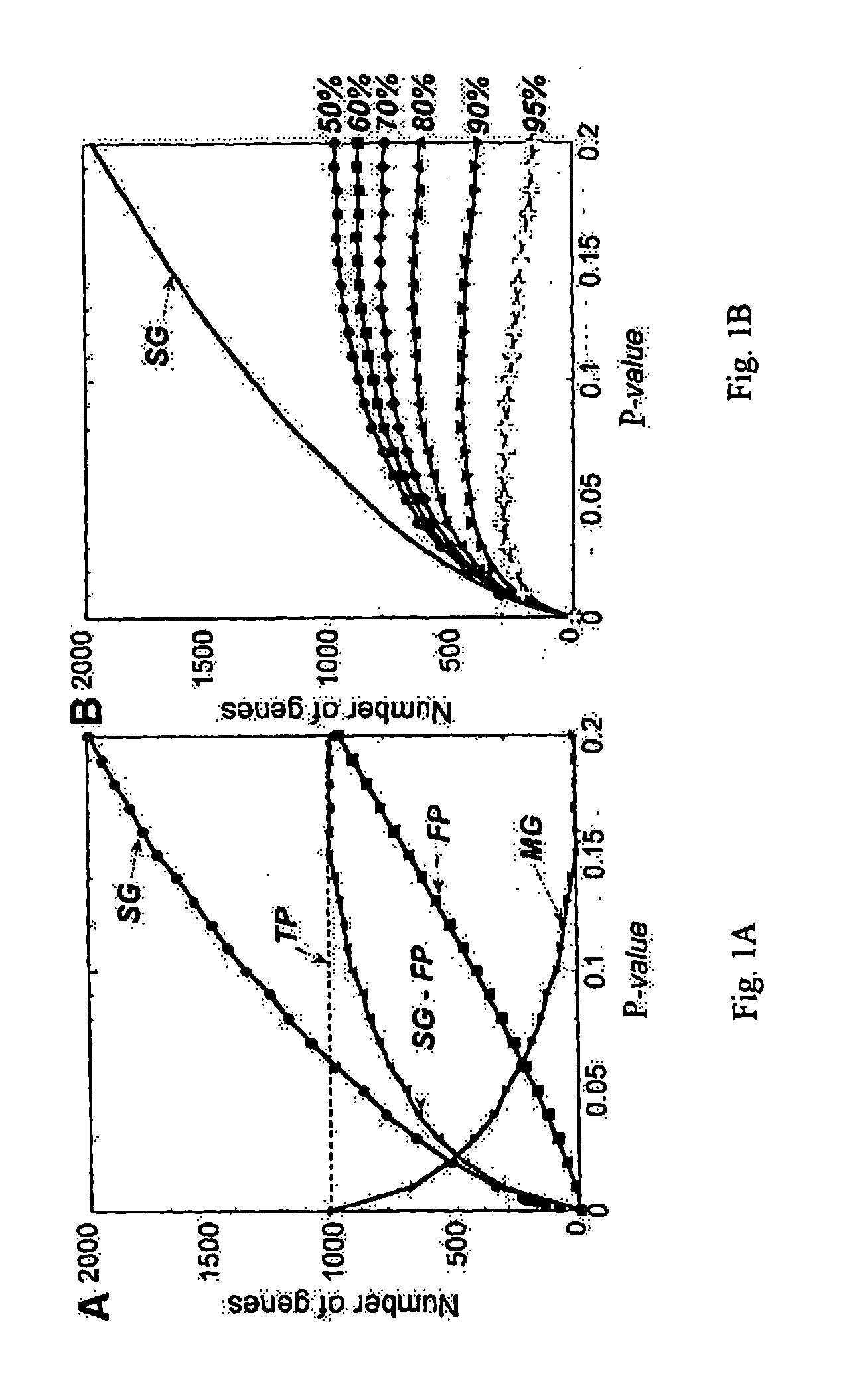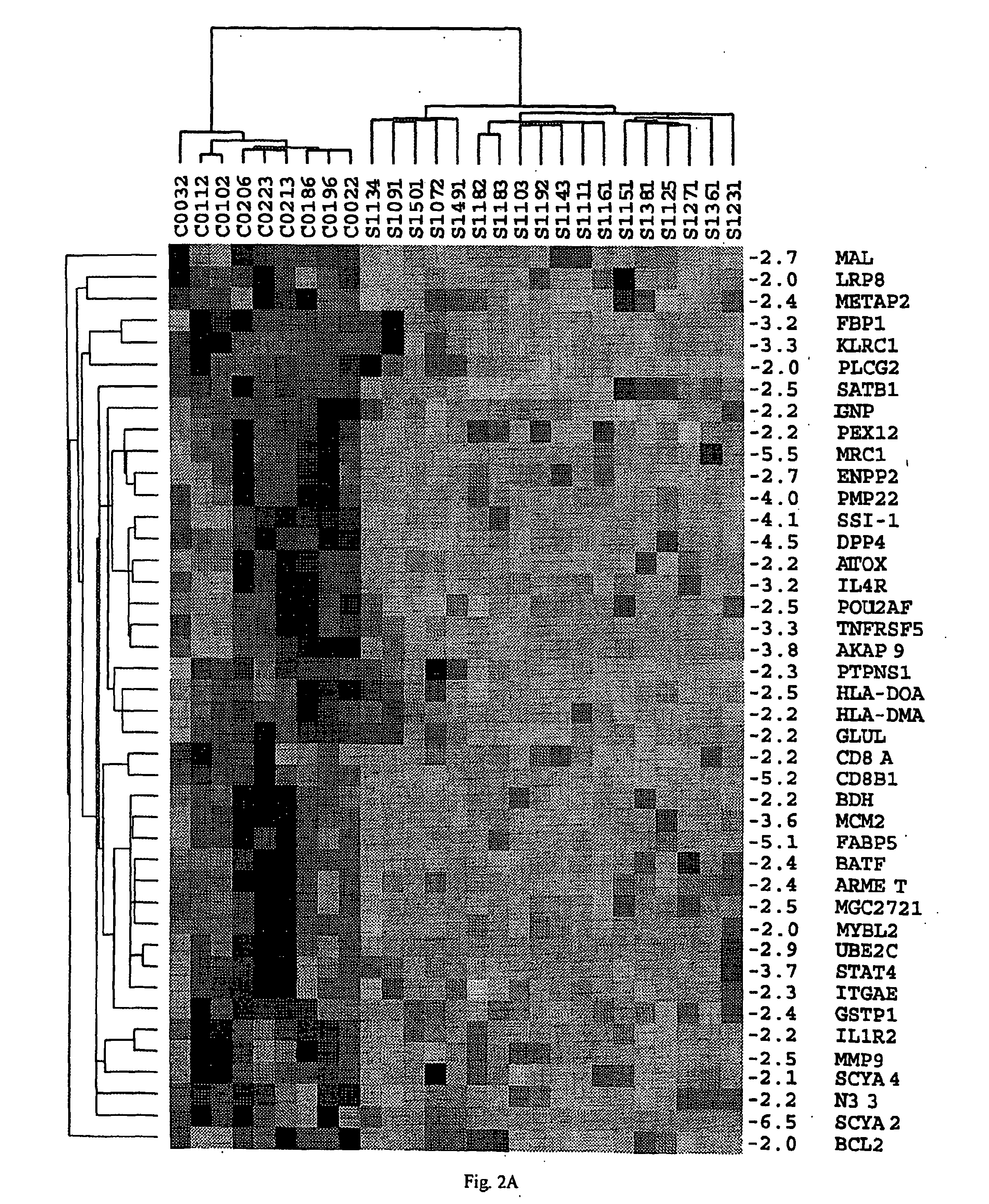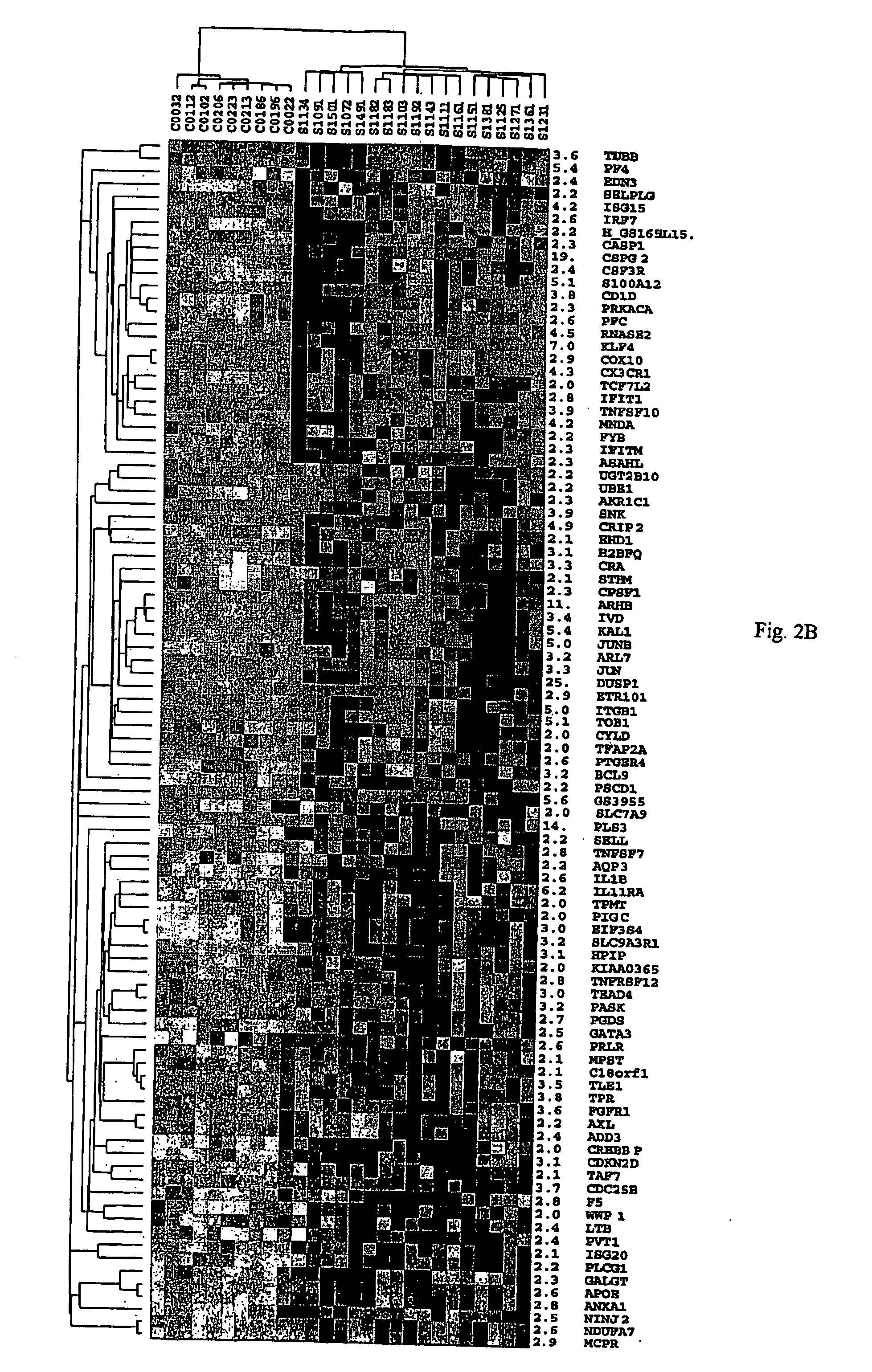Method of diagnosis of cancer based on gene expression profiles in cells
a cell and gene expression technology, applied in the field of cancer diagnosis, can solve the problems of relapse, mf is often misdiagnosed, and relatively rare cancer is difficult to diagnose, so as to achieve the effect of reducing the risk of recurrence, and improving the accuracy of diagnosis
- Summary
- Abstract
- Description
- Claims
- Application Information
AI Technical Summary
Benefits of technology
Problems solved by technology
Method used
Image
Examples
example 1
Analyses of PBMC From Patients With CTCL
[0141] A. Purification of PBMC from CTCL Samples and Preparation of Normal Controls.
[0142] PBMC were obtained by Ficoll gradient separation from peripheral blood of both normal volunteers and leukemic phase CTCL (Showe, L. C. et al, Ann N Y Acad Sci, 795: 413415, 1996 (Showe I); Gerosa, F., et al., Clin Immunol, 92: 224-234, 1999 (Gerosa II)). A total of 48 viably frozen CTCL patient samples with Sezary cells ranging from 5-99% of the lymphocyte population were analyzed. The Ficoll-purified PBMC fraction from high SS patients was 60-95% CD4+ malignant cells with a predominantly Th2 phenotype, and in decreasing abundance small percentages of B cells, monocytes and dendritic cells. Th2 skewed PBMC, prepared by culturing for 4 days in IL-4 and anti-IL-12, were used as controls for the high Sezary cell patients, as many characteristics of advanced disease are associated with a Th2 polarized immune response. Under these conditions >95% of the CD4...
example 2
Validation of Array Results Using Quantitative Real-Time PCR
[0165] To determine the accuracy of changes in gene expression reported by the arrays in Example 1, selected genes were assayed by quantitative real-time PCR (QPCR) for the eighteen high Sezary cell samples and nine Th2 controls. The direction of change by PCR was in agreement for every gene tested. Of 32 genes tested, only one gene, PLS3, showed an important difference in the two assays (500-fold up by QPCR and only 14-fold up by array, probably attributable to some cross-hybridization which raised the array control values.
[0166] Over the remaining 31 genes, for approximately 75%, the two ratios agreed within a factor of two, the average of the microarray ratio to the QPCR ratio was 0.70, and the median was 0.61. The comparison of the PCR and microarray assay in Table 5 shows that the arrays give a highly reliable estimate of the direction of change in gene expression with a tendency to underestimate quantitative differe...
example 3
Expression Profiles of a Small Number of Genes Identified by Penalized Discriminant Analysis Correctly Classify High Sezary Patients and Normal Control Samples
[0167] PDA, as implemented by CLEAVER was used to identify genes with the highest power to correctly distinguish patients from controls. To identify the best genes for distinguishing the two sample classes, the PDA program was trained on the eighteen high Sezary cell samples versus nine Th2-skewed and three untreated controls. Crossvalidation of the samples in these two classes is 100% accurate.
[0168] To select the best features for classification a pHuman Behavior and Principle of Least Effort: An Introduction to Human Ecology Addison Wesley, Cambridge, Mass.), these 200 genes are expected to most effectively differentiate patients from controls.
[0169] As few as four of these genes, for example, either
[0170] 1) STAT4, TOB1, CD26 and TRAIL, or
[0171] 2) STAT4, TOB1, SEC61A1 and GS3686, can be used for correct classificatio...
PUM
| Property | Measurement | Unit |
|---|---|---|
| Therapeutic | aaaaa | aaaaa |
| Gene expression profile | aaaaa | aaaaa |
Abstract
Description
Claims
Application Information
 Login to View More
Login to View More - R&D
- Intellectual Property
- Life Sciences
- Materials
- Tech Scout
- Unparalleled Data Quality
- Higher Quality Content
- 60% Fewer Hallucinations
Browse by: Latest US Patents, China's latest patents, Technical Efficacy Thesaurus, Application Domain, Technology Topic, Popular Technical Reports.
© 2025 PatSnap. All rights reserved.Legal|Privacy policy|Modern Slavery Act Transparency Statement|Sitemap|About US| Contact US: help@patsnap.com



